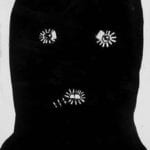 Politics
Politics  Politics
Politics  Weird Stuff
Weird Stuff 10 Eggs-traordinarily Odd Eggs
 History
History 10 Desperate Last Stands That Ended in Victory
 Animals
Animals Ten Times It Rained Animals (Yes, Animals)
 Mysteries
Mysteries 10 Devastating Missing Child Cases That Remain Unsolved
 Creepy
Creepy 10 Scary Tales from the Middle Ages That’ll Keep You up at Night
 Humans
Humans 10 One-of-a-kind People the World Said Goodbye to in July 2024
 Movies and TV
Movies and TV 10 Holiday Movies Released at Odd Times of the Year
 Politics
Politics 10 Countries Where Religion and Politics Are Inseparable
 Weird Stuff
Weird Stuff 10 Freaky Times When Famous Body Parts Were Stolen
 Politics
Politics The 10 Most Bizarre Presidential Elections in Human History
 Weird Stuff
Weird Stuff 10 Eggs-traordinarily Odd Eggs
 History
History 10 Desperate Last Stands That Ended in Victory
Who's Behind Listverse?

Jamie Frater
Head Editor
Jamie founded Listverse due to an insatiable desire to share fascinating, obscure, and bizarre facts. He has been a guest speaker on numerous national radio and television stations and is a five time published author.
More About Us Animals
Animals Ten Times It Rained Animals (Yes, Animals)
 Mysteries
Mysteries 10 Devastating Missing Child Cases That Remain Unsolved
 Creepy
Creepy 10 Scary Tales from the Middle Ages That’ll Keep You up at Night
 Humans
Humans 10 One-of-a-kind People the World Said Goodbye to in July 2024
 Movies and TV
Movies and TV 10 Holiday Movies Released at Odd Times of the Year
 Politics
Politics 10 Countries Where Religion and Politics Are Inseparable
 Weird Stuff
Weird Stuff 10 Freaky Times When Famous Body Parts Were Stolen
10 Chilling Accounts Of The Siberian Gulags
Beginning in the 1500s, Russia exiled their capital offenders to Siberia. There, they began their hard labor, working in the mines that were just being opened. While the frozen horrors of the Siberian labor camps tumbled about in the imaginations of people across the world, reports of what it was like inside these prisons, later called gulags under Stalin, began to appear in newspapers by the late 1800s.
10 Brutal Numbers
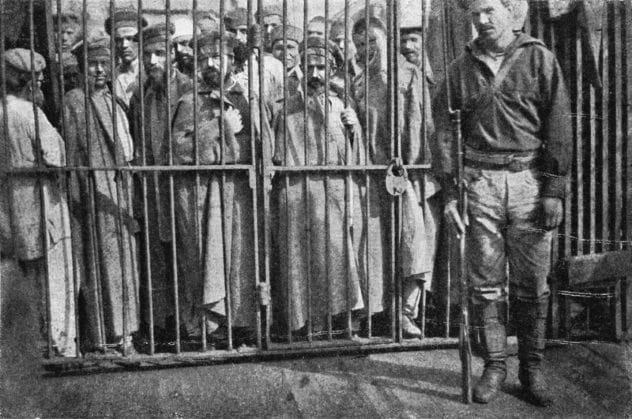
A newspaper article published in 1890 and titled “The Horrors of Siberian Prison Life” decided to cut to the chase and publish just the numbers coming from the Tomsk prison. It reported that the prison could hold 765 men, giving each of them 0.1 cubic meters (4.8 ft3) of air. However, overcrowding was forever a problem, and the prison held an average of 1,313 men in 1886, 1,120 men in 1887, and 1,380 men in 1888.
Among the prisoners sent to Tomsk were the sick. The prison had enough room to hold 275 sick prisoners, but the actual number of sick exceeded the space that was available. For example, in 1887, 512 of the prisoners were listed as being sick. Most of these men had typhoid fever. Since there wasn’t enough room for them, they were sometimes moved outside into the open air to exist in near-freezing temperatures.
Naturally, the mortality rates at Tomsk were rather high, with 360 to 400 men being buried each year.
9 Cannibalism In Sakhalin

The prison on the island of Sakhalin (spelled Saghalien in the 1800s) was known for its unusual cruelty, even compared to the other work camps and prisons in Siberia. By 1894, rumors and confirmations were coming to light about the treatment of convicts at Sakhalin.
Men and women were viciously flogged, sometimes to death. Their bodies were mutilated. There were also incidents of cannibalism because the prisoners weren’t being fed or getting enough food to sustain themselves.
8 Ball And Chain

In an account from 1903, a Russian officer was sentenced to 12 years at Nestchink, one of the copper mines in Siberia. During his time there, he wore balls and chains around his ankles day and night. He and the other prisoners in his room also wore the balls and chains to bed. He complained that any movement during sleep made noise, waking him and the others up throughout the night.
They also had to wear the chains when they worked their ten-hour days in the copper mine. During those long hours, he and the other prisoners were permitted three or four breaks during their shift, where they could return to the surface and let their clothes dry off a bit before heading back down into the mine.
7 No Contact With The Outside World
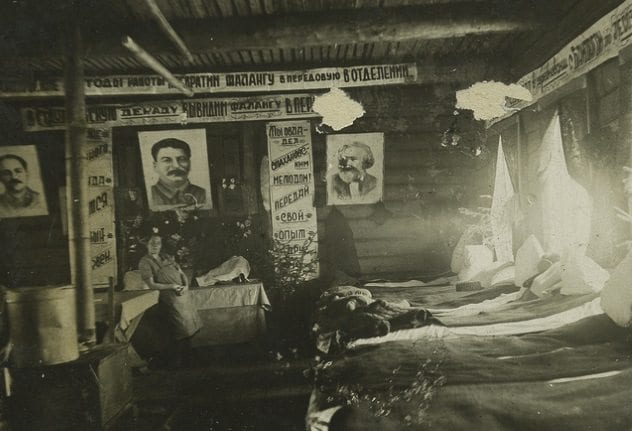
A newspaper out of New South Wales published a fascinating article in 1952 about a Polish woman who crossed into Russia to visit friends and was subsequently arrested by the Russian authorities. While the article doesn’t mention what crime she was charged with, the woman was sent to a Siberian work camp for a year. While there, one of her biggest complaints was that she was not allowed contact with the outside world. Prisoners were not even allowed to know what time it was or what day of the week it was.
Because of her gender, she was given the task of cutting trouser legs in a clothing factory. She had problems meeting their 300-pair-a-day quota, and as punishment, she was not given her full allotment of food. The daily diet consisted of water, dry bread, the husks of soybeans, and cabbage water.
6 Suicide Was Common

Life and punishment within the Siberian prisons was so terrible that many men decided to simply commit suicide. A newspaper report from 1910 stated that a man who was sent to the Zarantui prison committed suicide after being flogged. He was charged with having assassinated the Russian minister of the interior.
In 1912, 40 political prisoners were sent to the Nertoinsk prison. There, they received 30 lashes. The men suffered from terrible hunger and, no doubt, fear. Two of the men committed suicide by “opening veins,” and another two men killed themselves with poison.
Suicide attempts seemed to be widely permitted within the Siberian prisons.
5 Notched, Slit, And Branded

Professor Ossendowski, a scientist and writer, spent ten years traveling through Siberia and studying the minerals in the area. When he returned, he shared his stories with the public. In one article, published in 1925, the scientist recounted how he had met up with two escaped convicts during an excursion. He hired the men to help him out and in turn learned a bit of what life was like in the work camps.
First, both of the men were marked as convicts. Their ears were notched, and their nostrils were slit open. This was to make the men easily identifiable should they escape the work camp. According to Professor Ossendowski, “Every Russian citizen meeting men with such marks had the right to kill them.”
The men were also branded. The marks “were so deeply burned that one could see the barely-covered ribs.”
4 Skin Pocket

One of the more bizarre accounts given was about skin pockets. Apparently, one of the escaped Siberian convicts who helped Professor Ossendowski had a skin pouch to hide weapons.
The account stated that the professor wished he had a small pocketknife to skin whatever it was that he had shot. When the convict heard this, “He put his hand to his naked hip, and right at the place where the abdomen joins the hip, he laid back a fold of the skin.” The convict pulled out a small knife, explaining that, “We old convicts always undergo this operation. We have to have weapons in our fights with the jailers or soldiers pursuing us.”
3 Chained To A Wheelbarrow

Given the terrible conditions found in the Siberian prisons and work camps, many people tried to escape. They were often caught and punished, but there was a curious punishment at the Sakhalin prison for those who were caught trying to escape for a second time. These people, male or female, would be chained to a wheelbarrow for an entire year.
This was considered “a terrible and much-dreaded” punishment and rightly so. The person chained to the wheelbarrow could not find any comfort at night when attempting to sleep and had to push the wheelbarrow with him everywhere he went. It also made another attempt at escape nearly impossible.
2 Forced Marriages
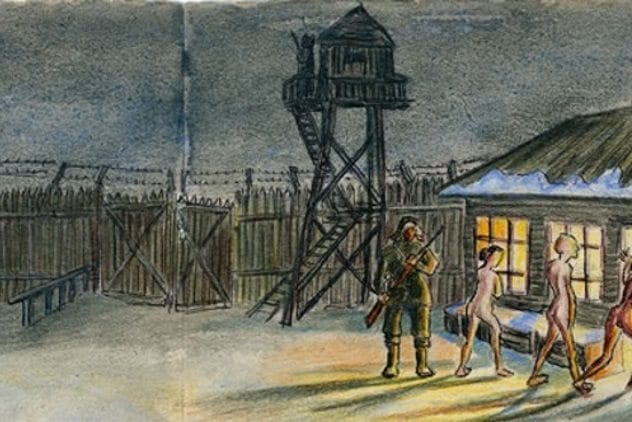
Unmarried women prisoners who arrived at the Sakhalin prison were immediately sent to a barrack room. Single male convicts were then allowed to come in and choose a wife. The women had no say in the matter, and the convicts were married immediately to seal the deal.
The lives of the female convicts were no better than their male counterparts. There were numerous accounts of women convicts being beaten, flogged, and punched.
1 Sleeping Conditions
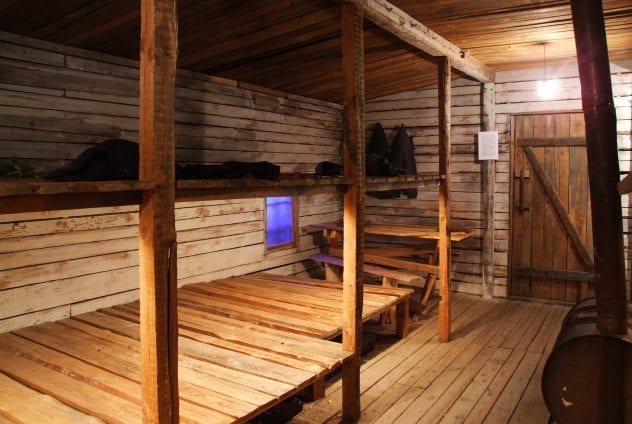
The Tyumen prison had terrible sleeping conditions, according to one account. Convicts were given a cell with a wooden platform that was built about 0.6 meters (2 ft) above the floor. The men would share this sleeping platform, called a nare, at night. There were no pillows, no mattresses, and no blankets. The convicts slept fully clothed in order to stay warm. The only other item in each cell was a wooden tub for bathroom use.
Overcrowding was a huge problem at this prison. Back in 1888, it was reported that one of the cell rooms had enough room for 35 men, but at the moment, there were 160 stuffed into the room.
Elizabeth, a former Pennsylvania native, recently moved to the beautiful state of Massachusetts, where she is currently involved in researching early American history. She writes and travels in her spare time.





